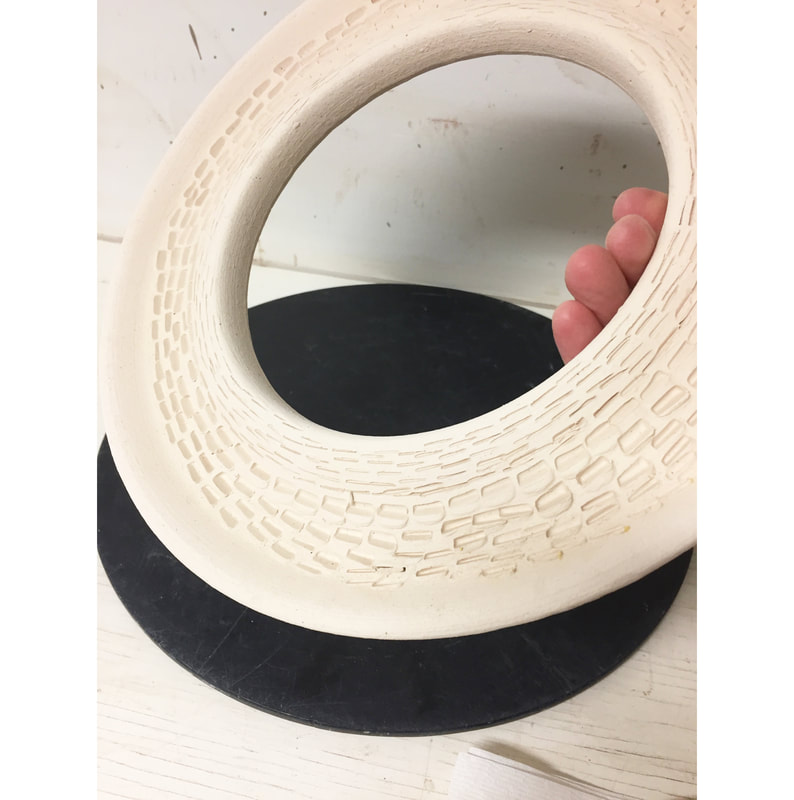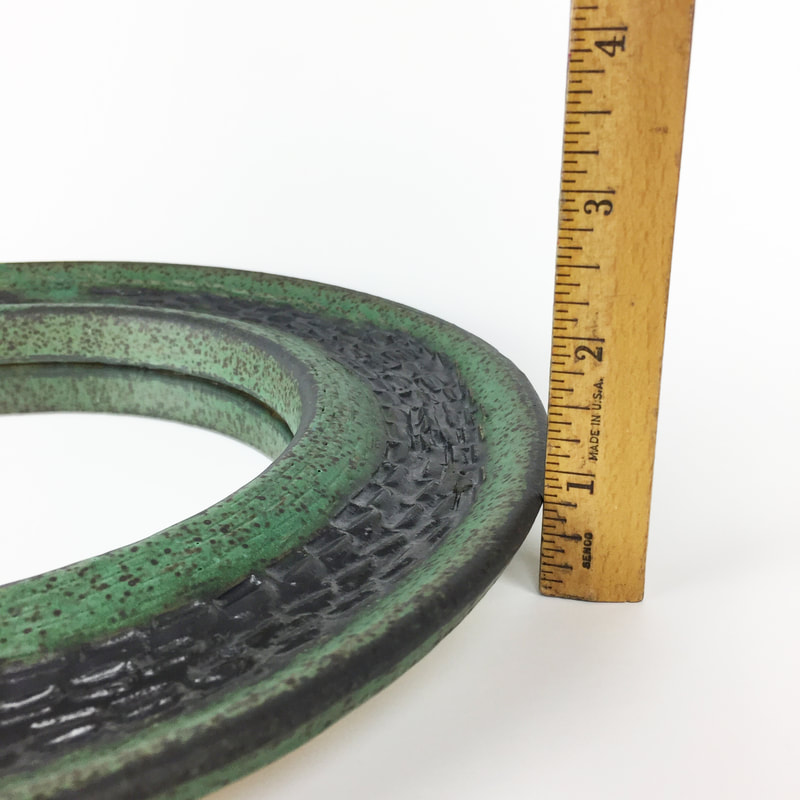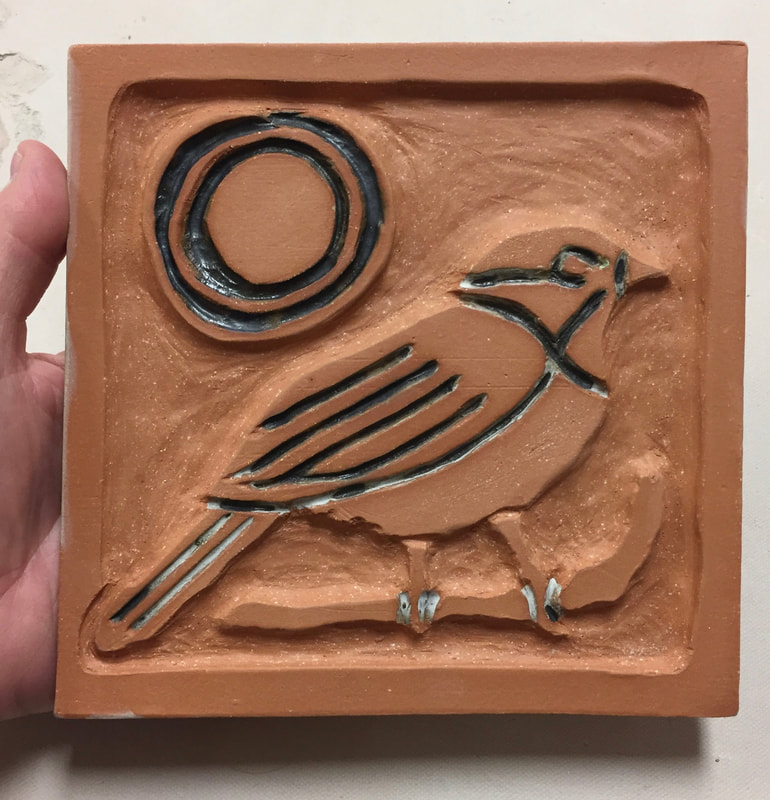BE GIVING 4th Annual Gala
To support The Andover Center for History and Culture
October 10, 2019, Andover Country Club
Trespas was one of three artists invited to create a work of art inspired by one of the 50,000 items in the ACHC's collection.
To support The Andover Center for History and Culture
October 10, 2019, Andover Country Club
Trespas was one of three artists invited to create a work of art inspired by one of the 50,000 items in the ACHC's collection.
Looking Glass, stoneware, glass mirror, felt, hanging wire, 11 inches diameter, 2019 (sold)
Exploring rooms upstairs in the Amos Blanchard House, I spied a broken mirror shard wrapped carefully with wire and hung to the wall. To paraphrase a house legend, Elizabeth Blanchard hung a mirror above the washstand for the boarders to wash up. However, these young boys often slammed their bedroom door, which knocked the mirror off the wall and sent it to shatter against the floor. Mrs. Blanchard eventually tired of buying replacement mirrors. In frustration she wrapped the broken piece with wire, hung it on the wall, and announced that the boys would have to make do with the mirror sliver until they learned not to slam the door.
Given this story, I resolved to make Elizabeth Blanchard a new mirror.
From washstand bowls and water pitchers to serving dishes and vases, ceramic vessels are part of our daily rituals throughout time. As a material, stoneware will outlive all of us, though perhaps not in its original form. How long does history last? History can be found in great storytelling, sharing, and marked by details framed for impact and recall.
Given this story, I resolved to make Elizabeth Blanchard a new mirror.
From washstand bowls and water pitchers to serving dishes and vases, ceramic vessels are part of our daily rituals throughout time. As a material, stoneware will outlive all of us, though perhaps not in its original form. How long does history last? History can be found in great storytelling, sharing, and marked by details framed for impact and recall.
Chickadee, stoneware, 6.5 x 6.5 inches, 2019 (sold)
The ceramic tiles Addison LeBoutillier created for the Grueby Faience Co., Boston, inspired me to develop a clay and glaze combination that resembled his. To understand his process, I reverse engineered what I believed to be the basic steps LeBoutillier took to form his tile of a seated musician. Into my slab of leather-hard clay, I relief carved the silhouette a black-capped chickadee, the chipper Massachusetts state bird. The connection between the musician and the chickadee is their song.
Below is the process I followed to make the “Chickadee” stoneware tile:
Buy, portion, and wedge red clay; roll out even and flat slab; cut slab into square; allow square to dry to a “leather-hard” state; develop, design and transfer drawing to leather-hard clay, carve out negative areas; and, treat specific areas with an dark stain. The tile is then bisque fired, selectively waxed, applied with (yellow) glaze, and glaze fired to approximately 2200°F.
Below is the process I followed to make the “Chickadee” stoneware tile:
Buy, portion, and wedge red clay; roll out even and flat slab; cut slab into square; allow square to dry to a “leather-hard” state; develop, design and transfer drawing to leather-hard clay, carve out negative areas; and, treat specific areas with an dark stain. The tile is then bisque fired, selectively waxed, applied with (yellow) glaze, and glaze fired to approximately 2200°F.


















